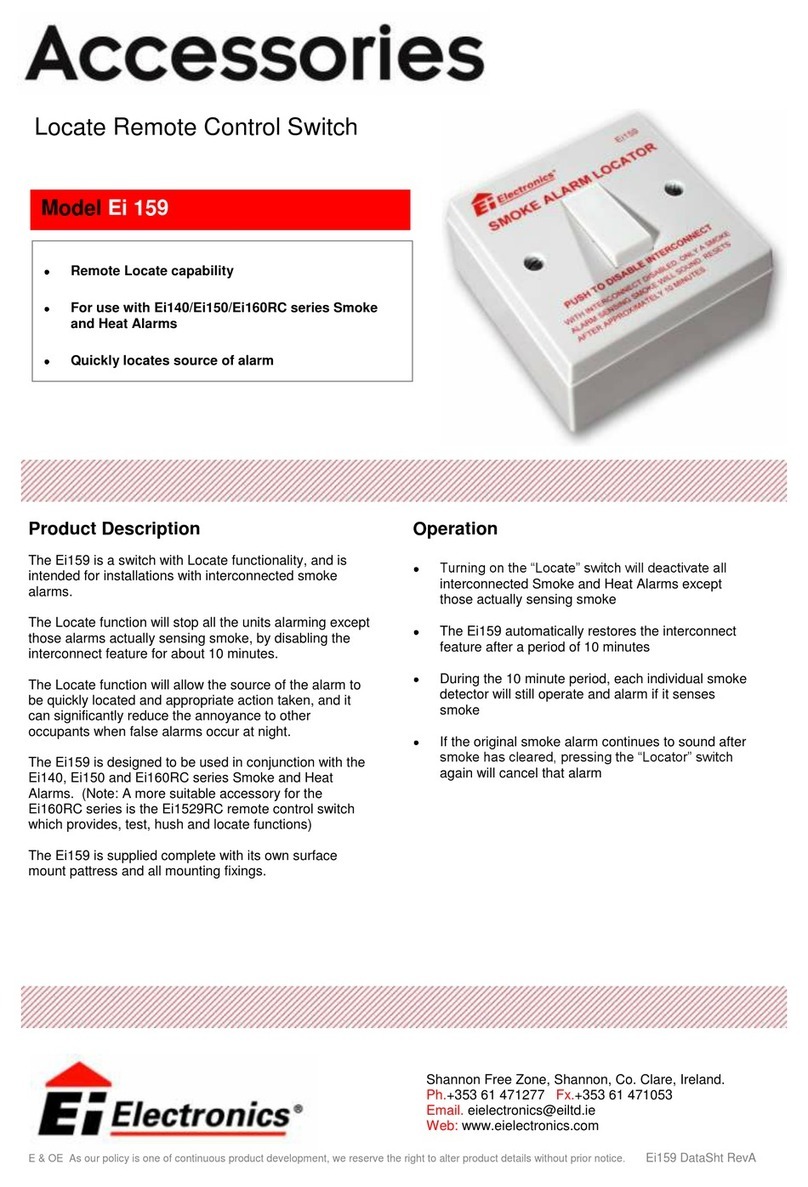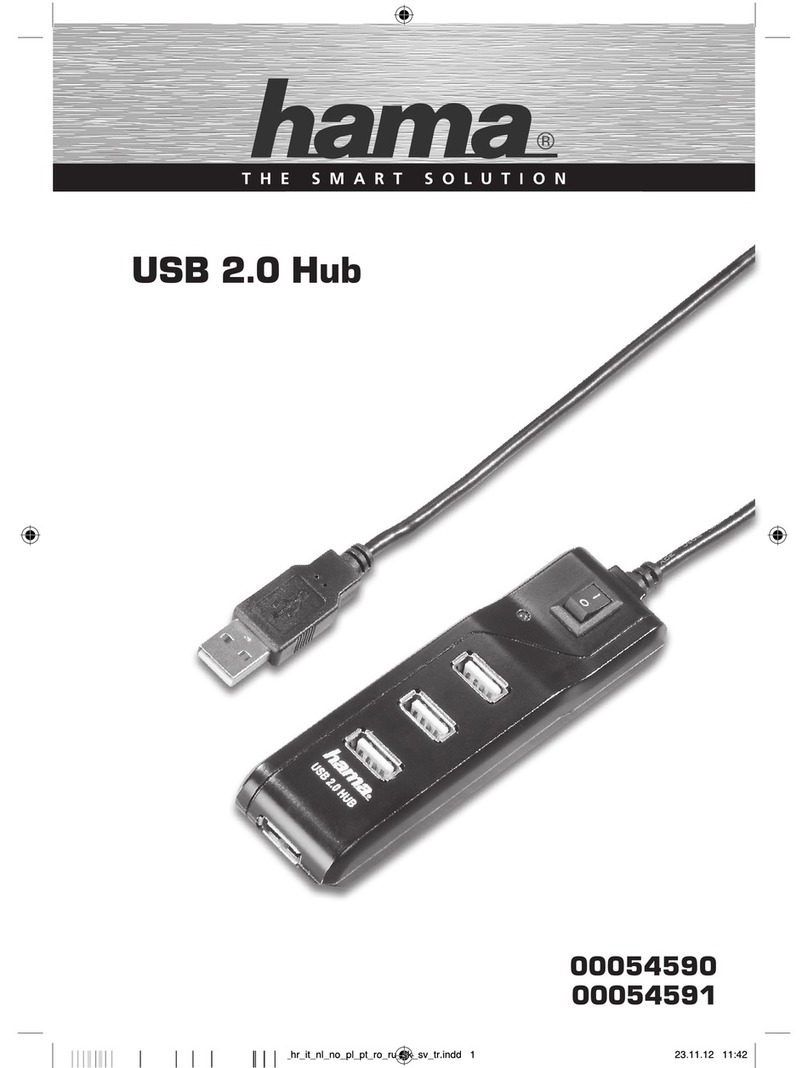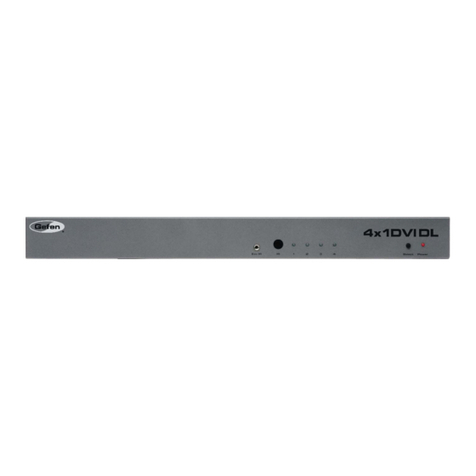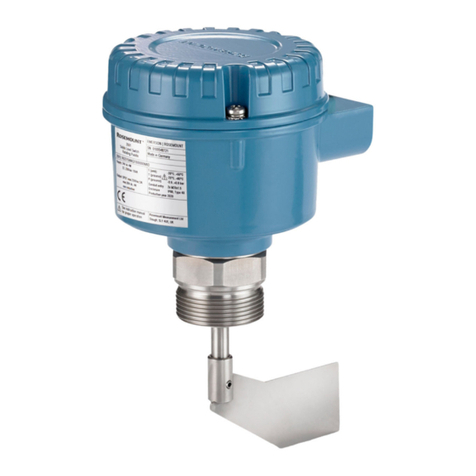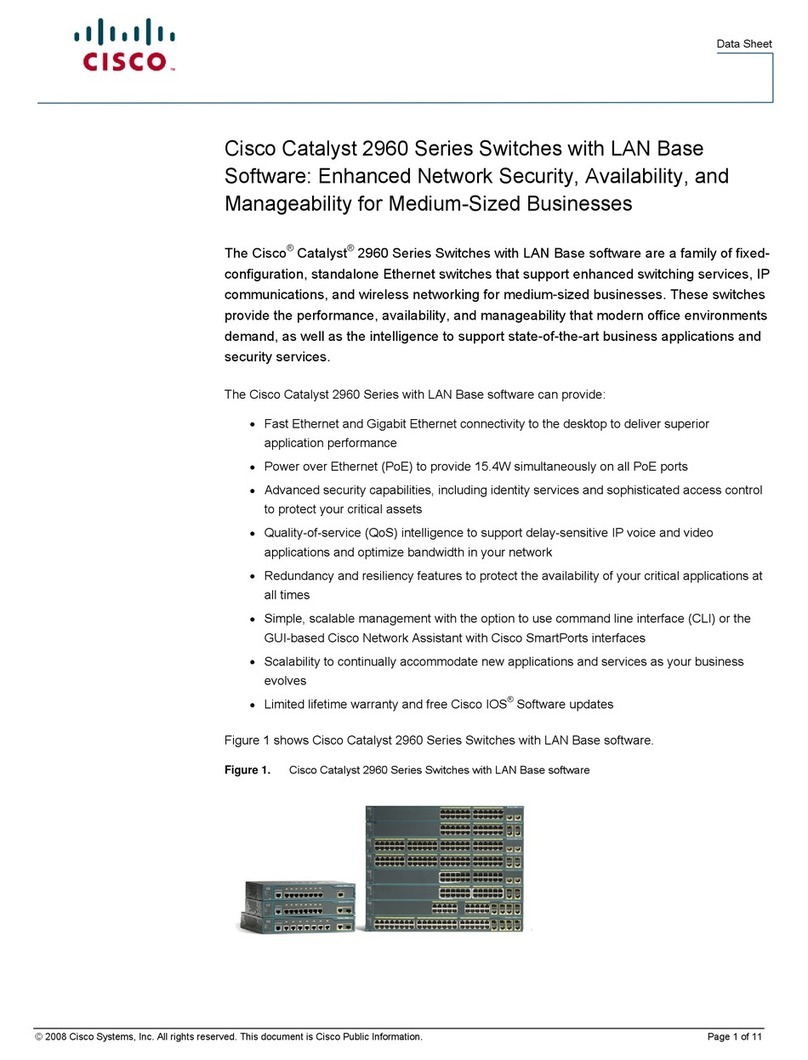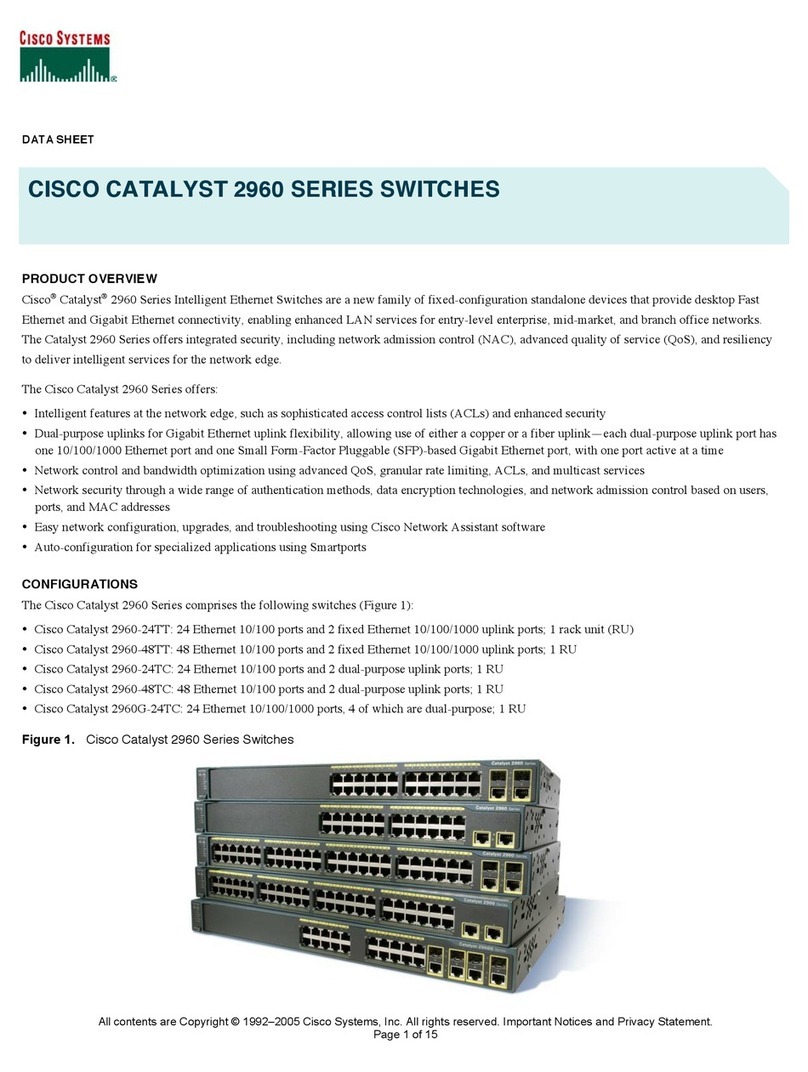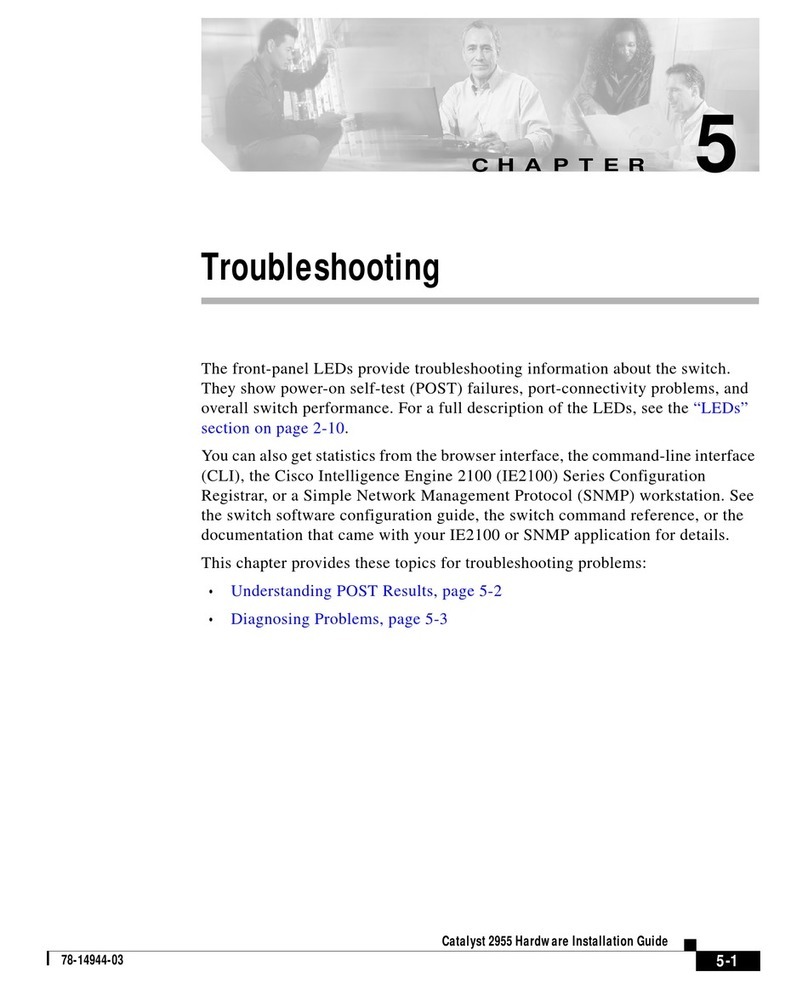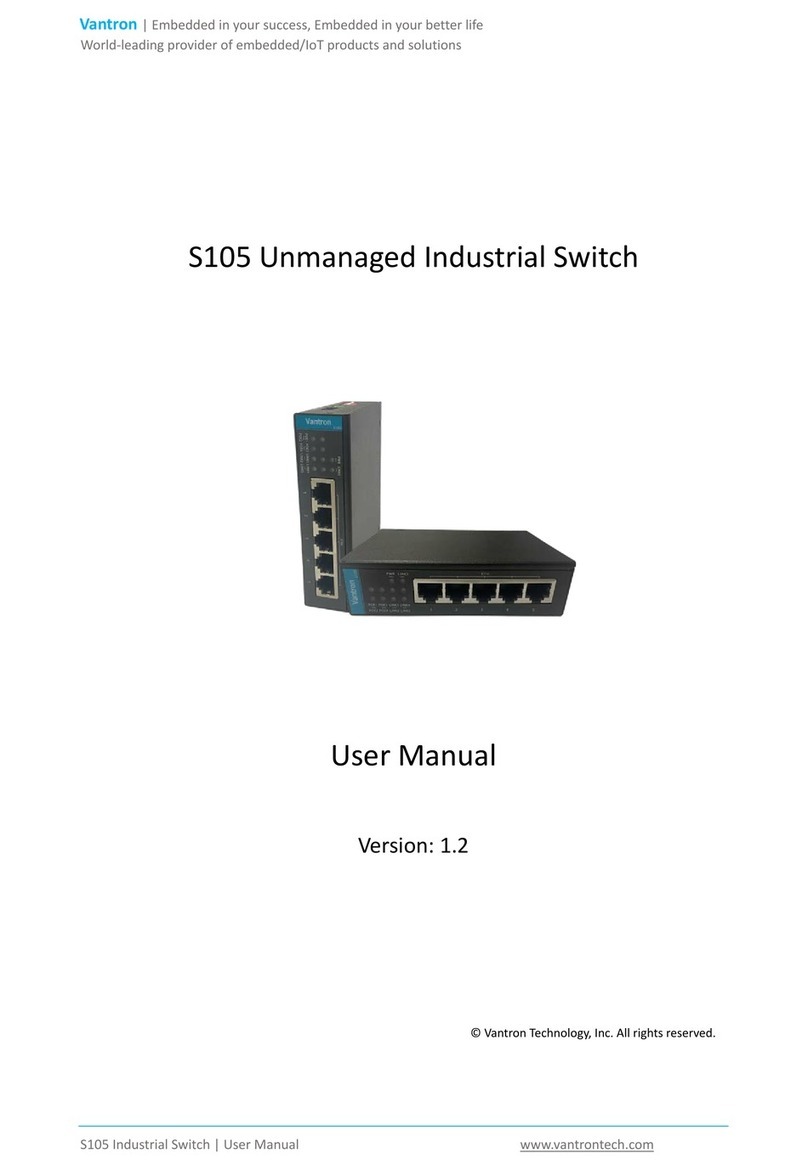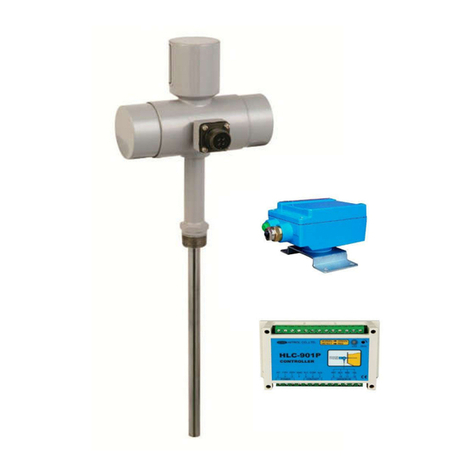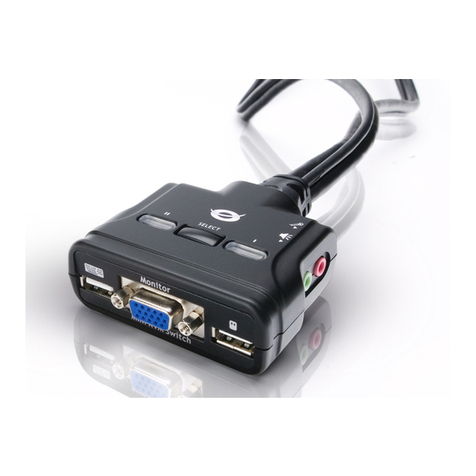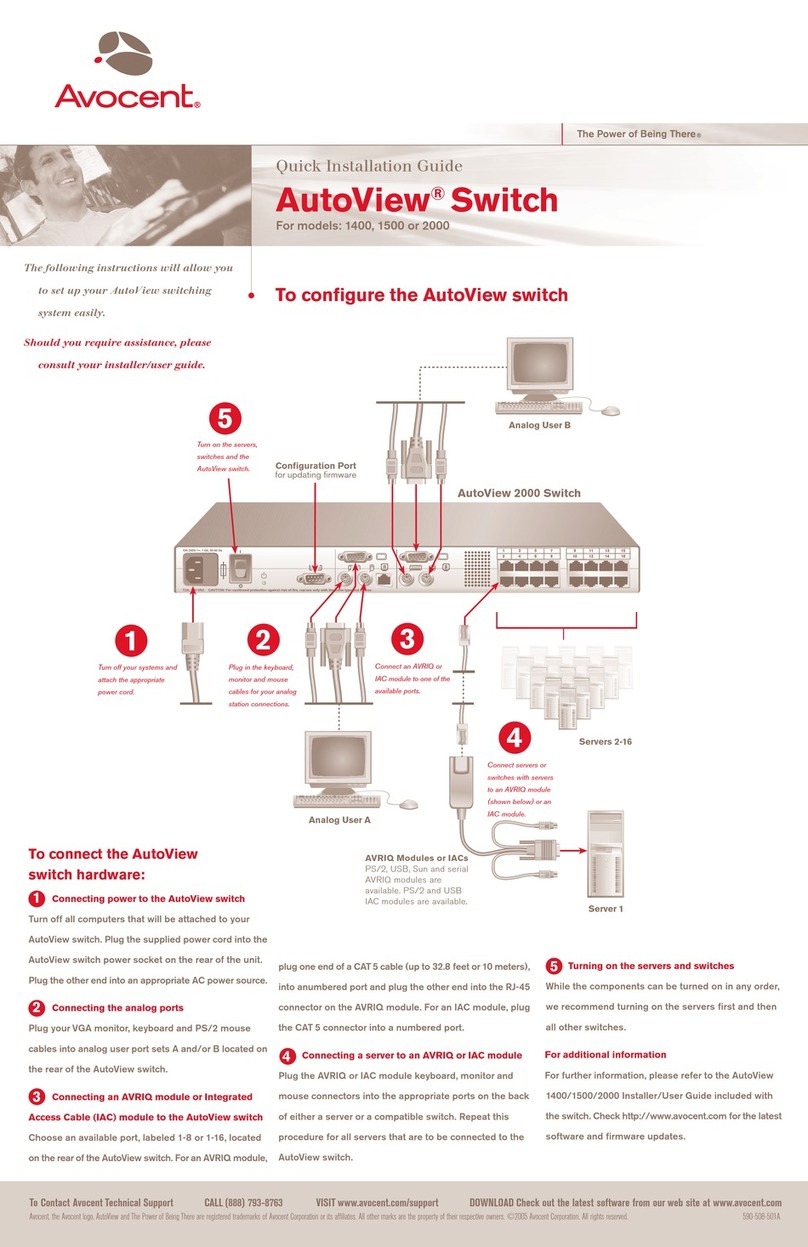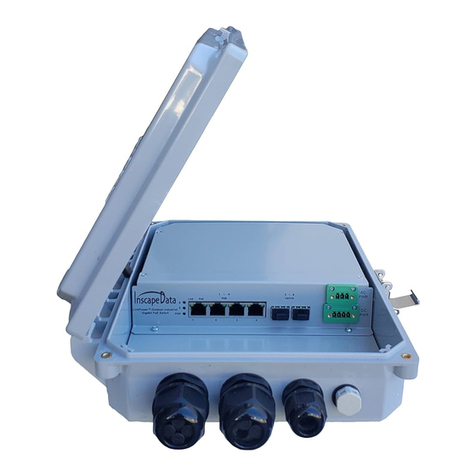Ei Electronics Ei1529RC User manual



Meet your low maintenance, low energy, low noise, top of the
range decentralised mechanical extract ventilation fan (dMEV).
DO NOT SWITCH IT OFF!
Your house is fitted with a
continuous running extract fan
Your continuous ventilation fan provides protection for your home
against condensation, mould growth and ensures a good level of
indoor air quality. Everyday activities such as bathing, cooking and
showering creates steam and smells which will be reduced by the
constant ventilation of CV2GIP.
What is continuous extract ventilation?
Continuous extract ventilation is a simple and effective form
of whole house ventilation. The airflow rates are set to enable
effective ventilation in the property as they are running
24 hours a day!
How does it work?
Continuous extract fans provide low level
background ventilation to all wet rooms with
automatic boosting features when required.
The Boost operation is commonly activated
via the light switch, when short bursts of high
extraction are required, or via the automated
humidity and timer sensors. The low level
continuous ventilation ensures the effective
provision of good indoor air quality. The
CV2GIP is a decentralised ventilation system
found in all the rooms that needs air extraction
and fresh air via the dry rooms.
For full instructions and maintenance information on the CV2GIP fan, please refer to the Homeowner Guide available at:
www.greenwood.co.uk/uploads/docs/530.pdf
Get to know your Greenwood Unity
CV2GIP fan
Watts Hours
Used per
day
Total
KWh
per day
Total KW
per year
Total
Annual
cost at 12p
per unit
Annual
Running
Cost
Price correct as of August 2017.
Trickle
Trickle
622 0.0242 8.8
3.9
£1.05
£0.47
0.0108
£1.53*
213
Boost
Boost
Customer Service
01276 408404
Technical Service
01276 408402
Website:
www.greenwood.co.uk
Email:
orders@greenwood.co.uk

✓Low running cost
✓Low noise
✓Low voltage for safety
✓Low maintenance - no filters to replace
✓SMART technology - works harmoniously with the surrounding
environment and contributes towards reducing carbon footprint
The running cost for the
whole year is just above
£1.50.
That’s the same price
as a loaf of bread!
DO NOT SWITCH IT OFF!
Your house is fitted with a
continuous running extract fan
Kitchen
In the kitchen, the CV2GIP will be running continuously at a low
level. A boost function will be provided – either by an independent
switch or automatically via humidity sensing depending on how
it has been installed. The boost function is needed usually when
you are cooking to remove higher levels of moisture and odours.
The CV2GIP fan has been made to last for a long time and will
provide many years of trouble free operation.
Bathroom
In the bathroom, the CV2GIP fan will be running continuously at
a low level. A boost function will activate via the light switch or
humidity sensor depending on how it has been installed. The
boost function is needed to quickly remove increased levels of
moisture or odours from the room.
For full instructions and maintenance information on the CV2GIP fan, please refer to the Homeowner Guide available at:
www.greenwood.co.uk/uploads/docs/530.pdf
Meet your low maintenance, low energy, low noise, top of the
range decentralised mechanical extract ventilation fan (dMEV).
Get to know your Greenwood Unity
CV2GIP fan

How many pints of moisture do you think a
shower creates?
✓Good ventilation helps reduce
condensation i.e. water droplets
on windows, walls or other
surfaces
✓Draw out the moisture in your
home and minimise the effect
of dampness on your home’s
structure.
✓Ventilation in ‘wet rooms’ is essential
✓Existing homes where insulation has been improved/
upgraded
✓New Homes – Building Regulations
✓Mould and Condensation are serious issues
✓Ventilation help control the
concentrations of VOCs (Volatile
organic compounds) becoming
toxic
✓Allergens such as pollen, dust
and other irritants will be reduced
significantly with proper ventilation
✓Reduce the risk of Radon gas,
which is orderless, colourless gas
and is formed by natural decay of
uranium rocks
High concentrate of indoor pollution could be harmful to you and
your family without you even realising it.
The benefits of good ventilation
in the home.
There is a lot of moisture in homes!
A bath or shower
Drying clothes indoors
Cooking and use of a kettle
2 pints
9 Pints
6 Pints

Ei3024 / 3016 / 3014
Alarms
Instruction Manual
Mains Powered
Read and retain carefully for as long as the product is being used. It contains vital
information on the operation and installation of your Alarm. The manual should be
regarded as part of the product.
If you are just installing the unit, the manual MUST be given to the householder. The
manual is to be given to any subsequent user.

3
Contents
Installer Guide 5
1. Introduction 5
1.1 Overview 7
1.2 Technical Specifications 9
2. Installation 11
2.1 Important Safety Instructions 12
2.2 Where to locate the Alarm? 13
2.3 Which Alarm in what room? 16
2.4 Where in the room? 18
2.5 Locations to avoid 19
2.6 Mounting and wiring 21
2.7 Interconnecting Alarms 25
2.8 Removing the Alarm 27

4
User Guide 29
3. Testing 29
3.1 Testing and maintaining your Alarm 30
3.2 Cleaning your Alarm 32
4. What to do in case of alarm 34
5. Indicator Summary Tables & Troubleshooting 36
6. Important safeguards 44
7. Limitations of Fire Alarms 46
8. Service and Guarantee 48
8.1 Getting your Alarm serviced 49
8.2 Guarantee 49

5
1
Introduction
Installer Guide

6
The Ei3024 is a Multi-Sensor Fire Alarm with heat enhanced optical smoke sensor and automatic dust
compensation, delivering a faster response to a wider range of fires. It detects both smoke and heat
from a fire and is ideal for hallway, landing, living room and bedroom areas.
The Ei3016 is an Optical Smoke Alarm, with a proven optical sensor and automatic dust compensation
delivering a fast response to smouldering fires. It is ideal for hallway, landing and living room areas.
The Ei3014 is a Heat Alarm with a Class A1 heat detection sensor. It can only to be used as part of
a fire detection system, i.e. interconnected with Aico/Ei Electronics mains powered Multi-Sensor
Fire or Smoke Alarms. It is ideal for kitchens, garages, boiler houses and other areas where there
are normally high levels of fumes, smoke or dust i.e. places where Smoke Alarms cannot be installed
without the risk of excessive nuisance alarms.
Up to 12 Alarms can be interconnected so that if one senses fire, all Alarms sound. It can be a
hardwired interconnection, a wireless interconnection or a mixture of both (for the wireless option
an Ei3000MRF SmartLINK module needs to be added to each Alarm – sold separately).
The Ei3000 series is supplied with a mounting plate that allows very quick and simple installation
of the Alarm. The mains and battery power is automatically connected as the Alarm slides onto the
mounting plate. Each Alarm comes with built-in rechargeable backup batteries to power the Alarm
in the event of a mains failure.
AudioLINK
The Ei3000 series Alarms are AudioLINK enabled. This feature allows the user to download information
from the Alarm through the use of a smart phone App. For more information on using this feature,
please refer to the relevant section on www.aico.co.uk.

7
1.1 Overview
Red LED
Alarm Indicator
Yellow LED
Fault Indicator
Green LED
Power Indicator
Test / Hush Button Alarm Sounder
Ei3014 Heat AlarmEi3016 Optical Alarm
Heat Sensor
(Thermistor)
RF Module
LED Indicator
House Code
Button
Alarm
Removal
Latch
Smoke Entry
Vents
RF Module
LED Indicator
House Code
Button
Alarm
Removal
Latch
Heat Sensor
(Thermistor)
Smoke Entry
Vents
RF Module
LED Indicator
House Code
Button
Alarm
Removal
Latch
Ei3024 Multi-Sensor Fire Alarm

8
Red LED
Alarm Indicator
Yellow LED
Fault Indicator
Green LED
Power Indicator
Test / Hush Button Alarm Sounder
Ei3014 Heat AlarmEi3016 Optical Alarm
Heat Sensor
(Thermistor)
RF Module
LED Indicator
House Code
Button
Alarm
Removal
Latch
Smoke Entry
Vents
RF Module
LED Indicator
House Code
Button
Alarm
Removal
Latch
Heat Sensor
(Thermistor)
Smoke Entry
Vents
RF Module
LED Indicator
House Code
Button
Alarm
Removal
Latch
Ei3024 Multi-Sensor Fire Alarm

9
Optical Sensor Optical (Ei3024 and Ei3016)
Heat Sensor Thermistor Class A1 Detection (Ei3014 and Ei3024)
Power Supply 100-250V AC, 50Hz, 0.25W
Battery Backup
Built-in 10-year rechargeable Vanadium Pentoxide Lithium cells. Fully
charged, the battery will provide up to 6 months (without module
fitted) or 3 months (with module fitted) back-up without mains power
Alarm Sounder Piezoelectric
Alarm Sound Level 85dB(A) at 3 meters (min)
Memory Feature Indicates that the Alarm has previously detected fire
Self Test Sensors, batteries and electronics are automatically tested periodically
Test/Hush Button Checks sensors, electronics, interconnection and sounder.
If the unit is in alarm when pressed, it silences the alarm for 10min
Visual indicators Green LED – Power supply Yellow LED – Fault, EOL
Red LED – Memory or alarm (if coincides with sounding)
AudioLINK Enabled
Operational Life 10 years
1.2 Technical Specifications

10
Interconnection Up to 12 units can be interconnected via a hardwired or wireless
system (using optional Ei3000MRF SmartLINK module)
Fixings Supplied with Easi-fit anti-tamper mounting plate with integral
terminal block and wiring cover, includes screws and wall plugs
Operating & Storage
Temperature -10°C to +40°C*
Humidity Range 15% to 95% RH (non-condensing)
Plastic Material UL94V-0 flame retardant rated
Dimensions
Ei3024 and Ei3014: Product: - Ø150mm x 66mm
Package - 155mm x 155mm x 70mm
Ei3016: Product: - Ø150mm x 63mm
Package - 155mm x 155mm x 65mm
Weight 350g (including packaging)
Warranty 5 year (limited)
Approvals KM522831, KM83678, EN14604:2005+AC 2008, BS5446-2:2003
* Temperature and Humidity conditions are for normal operation and storage. Units will function outside
these ranges as required by the specific product Standards. Extended exposure to conditions outside
these ranges can reduce product life. For advice on prolonged operation outside these ranges consult
the manufacturer.

11
2
Installation

12
2.1 Important Safety Instructions
Mains operated Alarms should be installed and interconnected by a qualified electrician in
accordance with the local appropriate Regulations for Electrical Installations. Failure to install
this Alarm correctly may expose the user to shock or fire hazards and damage the product.
The Alarm is designed to be permanently mounted, using its own built-in terminal block
to connect it to the mains. The mounting plate can be screwed directly to the ceiling.
Alternatively, it can be screwed to a standard junction box (BS 4662 single gang accessory
box). It requires a typical current of 3mA. The Alarm must not be exposed to dripping or
splashing. There are important markings on the underside of the Alarm.
Alternative Energy Sources - (Wind, Solar, UPS etc.)
This product is designed to be connected to a Pure or True Sine Wave 230V AC supply.
If connecting to a power source that utilises an inverter, e.g. PV solar panel, the Total Harmonic
Distortion (THD) must be less than 5%. If in doubt please check with the manufacturer of the
inverter. This also applies to battery powered UPS (Uninterruptible Power Supply) inverters.
Light Dimmer Circuits – The Alarms must not be powered from a light dimmer circuit.
Do not install Alarms in new or renovated buildings until all work is completed.
The Alarm must not be connected when the house wiring insulation is being checked with
high voltages. i.e. Do not use a high voltage insulation tester on the Alarm.

13
The Alarm must be continuously powered 24 hours a day so it is important that it is not on a
circuit that can be turned off by a switch.
(UK) BS 5839-6:2019 gives the following recommendations regarding the mains supply to be
used in a Grade D system. The power supply for the Alarms should be derived from the public
electricity supply to the dwelling. The mains supply to the Alarms should take the form of either:
(a) an independent circuit at the dwelling’s main distribution board, in which case no other
electrical equipment should be connected to this circuit (other than a the supply to a
dedicated social alarm control unit); or
(b) a separately electrically protected, regularly used local lighting circuit.
(See BS 5839-6:2019 for further information).
Note: An all-pole mains switch shall be incorporated in the electrical installation of the
building.
2.2 Where to locate the Alarm
The advice here follows the guidance in British Standard BS 5839-6:2019 in general (for further
information refer to the relevant standards).
The main reason for fitting Smoke/Heat/Multi-Sensor Alarms in dwellings is to ensure that when
there is a fire, sufficient early warning is given so that everybody can escape safely. This means that
the fire Alarms should ideally be located near all potential sources of fires and that the alarm should
be heard throughout the house – particularly in the bedrooms.
It is also important that nuisance/false alarms are minimised to ensure the Alarms are not disabled
or ignored.

14
A single Smoke Alarm will give some protection if it is properly installed, but most homes will require
two or more to ensure that a reliable early warning is given. For recommended protection you should
put individual Smoke Alarms in all rooms where fire is most likely to break out (apart from the kitchen
and bathroom).
BS 5839-6:2019 gives guidance on:
- how many Alarms to install
- what type of Alarm to use
- where to position Alarms
The above points will depend on the type of dwelling to be protected and the level of fire risk.
Fire Risk Assessment
The ‘Grade’ and ‘Category’ of system that should be installed depends on the fire risk. It is therefore
recommended that a Fire Risk Assessment is undertaken. The Risk Assessment would be based on a
combination of probabilities:
- fire occurring
- injury or death to occupant
- system operating correctly with a fire
- early detection and warning to occupants in the event of a fire
The greater the risks, the more comprehensive and reliable systems needs to be.
LD (Life protection in Dwellings) Systems define the level of fire protection required for households,
depending on the fire risk and regulations. Aico/Ei Electronics recommends that an LD1 system be
installed for optimum protection.
Please see following pages for detailed information.

15
Optimum Protection LD1: As LD2, but in addition
Smoke or Heat Alarms should be located in all rooms
and other areas of the dwelling.
(apart from toilets or bathroom)
Interconnect all Alarms
for dwellings where occupants may be at high risk (e.g. elderly)
for new or materially altered dwellings or existing dwellings
with poor structural fire precautions
for dwellings where occupants may be at high risk (e.g. elderly)
for new or materially altered dwellings or existing dwellings
with poor structural fire precautions
Basic Protection LD2: Smoke or Heat Alarms in all
rooms or areas that present a high fire risk to occupants.
(apart from toilets or bathroom)
UK Requirements (BS 5839-6:2019)
Interconnect all Alarms
Heat Alarms located in:
(Heat Alarms must be within 5.3m of potential fire
sources)
each Kitchen
Multi-Sensor or Heat Alarms located in:
each Living room (i.e. most frequently used
daytime room)
Multi-Sensor or Smoke Alarms located:
on each storey
every 7.5 m of hallways and escape routes
within 3m of all bedroom doors
Multi-Sensor
Fire Alarm
Optical
Smoke Alarm
Heat
Alarm
do not
fit Alarm
(apart from toilets & bathrooms )
BASIC PROTECTION
OPTIMUM PROTECTION
Optimum Protection LD1: As LD2, but also including
attics / lofts / other spaces in which a fire might start
(apart from toilets or bathroom).
Interconnect all Alarms
Basic Protection LD2: all circulation areas that form
part of an escaper route within the dwelling, and all high
fire risk areas / rooms e.g. kitchen, living rooms, garages
and all bedrooms (apart from toilets or bathroom).
Interconnect all Alarms
Heat Alarms located in:
(Heat Alarms must be within 5.3m of potential fire
sources)
each Kitchen
Multi-Sensor or Heat Alarms located in:
each Living room (i.e. most frequently used
daytime room)
Multi-Sensor or Smoke Alarms located:
on each storey
every 7.5 m of hallways and escape routes
within 3m of all bedroom doors
Multi-Sensor
Fire Alarm
Optical
Smoke Alarm
Heat
Alarm
do not
fit Alarm
(apart from toilets & bathrooms )
BASIC PROTECTION
OPTIMUM PROTECTION
ROI Requirements
(IS 3218:2013)

16
2.3 Which Alarm in what room?
Location Ei3024
Mutil-Sensor
Fire Alarm
Ei3016
Optical
Smoke Alarm
Ei3014
Heat
Alarm (i)
Hall, Corridors, Escape routes ✔ ✔ ✗
Kitchens / Garages ✗ ✗ ✔ (iii)
Living Rooms ✔ ✔ ✔ (ii)
Bedrooms ✔ ✔ ✗
Shower / Bathrooms ✗ ✗ ✗
(i) A Heat Alarm should only be used in a room adjoining an escape route, in conjunction with
Multi-Sensor Fire Alarms or Smoke Alarms on the escape routes. All the Alarms should be
interconnected to ensure the early warning will be heard.
(ii) Some Fire authorities (concerned with the slow response of Heat Alarms) advise that Multi-Sensor
Fire Alarms or Smoke Alarms should be fitted in living rooms. This is acceptable according to BS
5839-6:2019 provided there are clearly not going to be problems with nuisance alarms. Fit Heat
Alarms only if nuisance alarms are very likely and it is acceptable that a warning will only be given by
the Heat Alarm when there is a very significant flaming fire in the room. If the door(s) and windows
are not closed to contain the fire and heat, it is extremely unlikely that the Heat Alarm would respond
before a Multi-Sensor Fire Alarm or Smoke Alarm sited outside in the corridor.
(iii) In enclosed kitchens with doors closed.
Other manuals for Ei1529RC
3
Other Ei Electronics Switch manuals
Popular Switch manuals by other brands
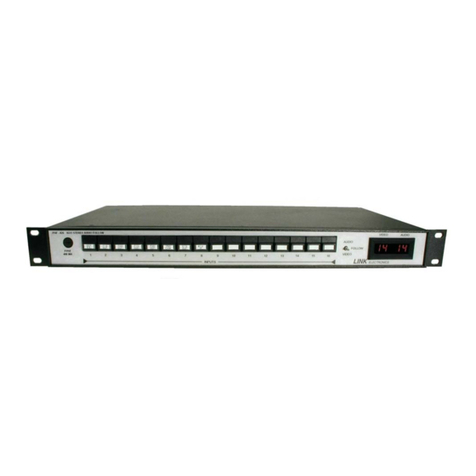
Link electronics
Link electronics PAF-826 Specification sheet

Wise
Wise P940 Series instruction manual

Alcatel-Lucent
Alcatel-Lucent OmniSwitch 9000 Series Brochure & specs
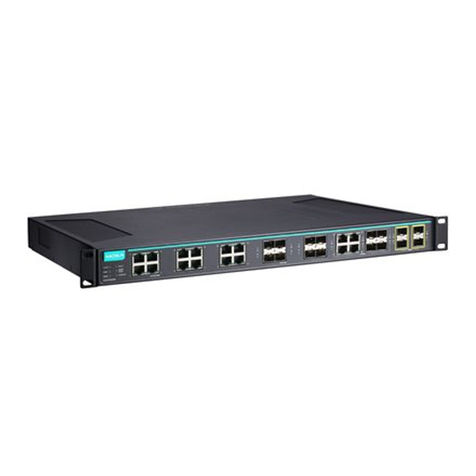
Moxa Technologies
Moxa Technologies ICS-G7828A-T Series Quick installation guide
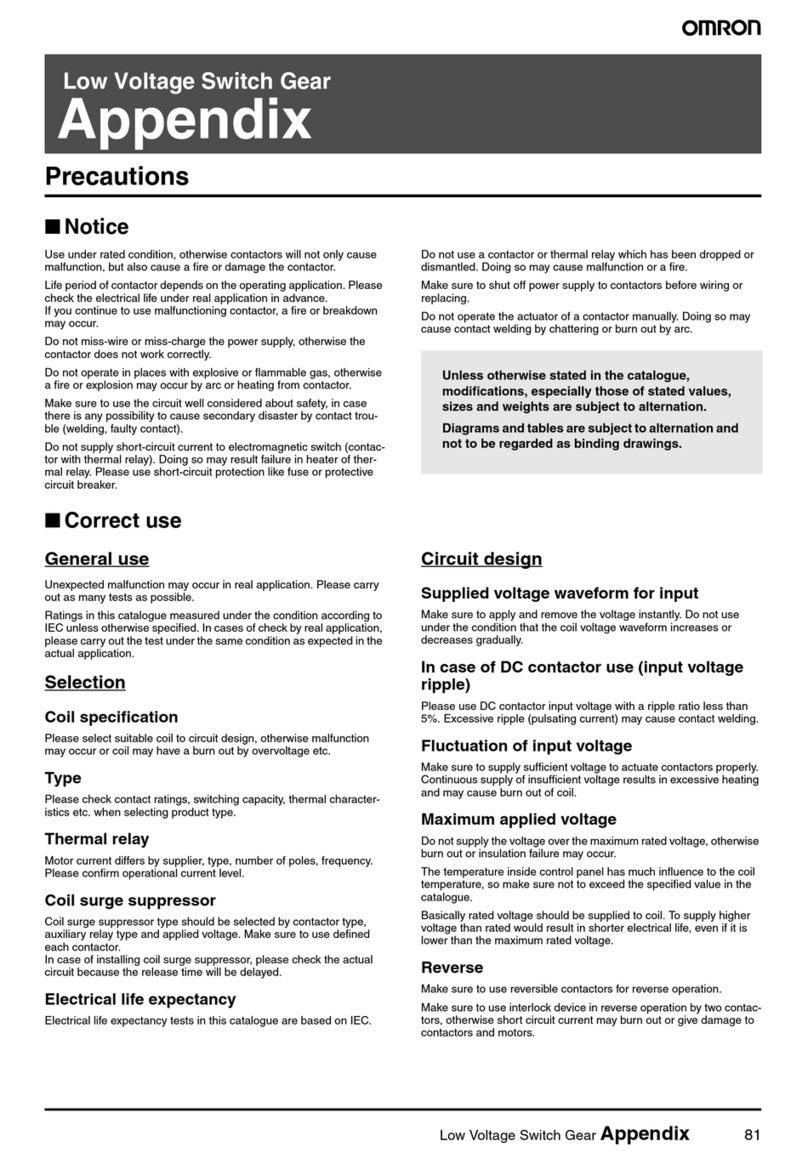
Omron
Omron EN 60947 - datasheet
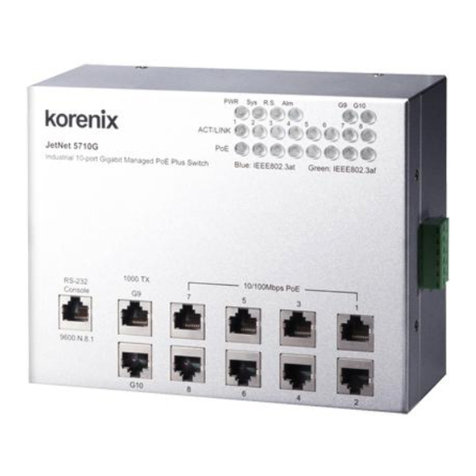
Korenix
Korenix JetNet 5710G Series Quick installation guide
